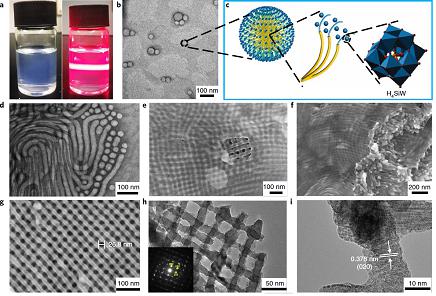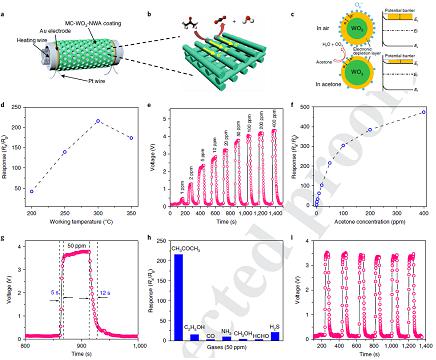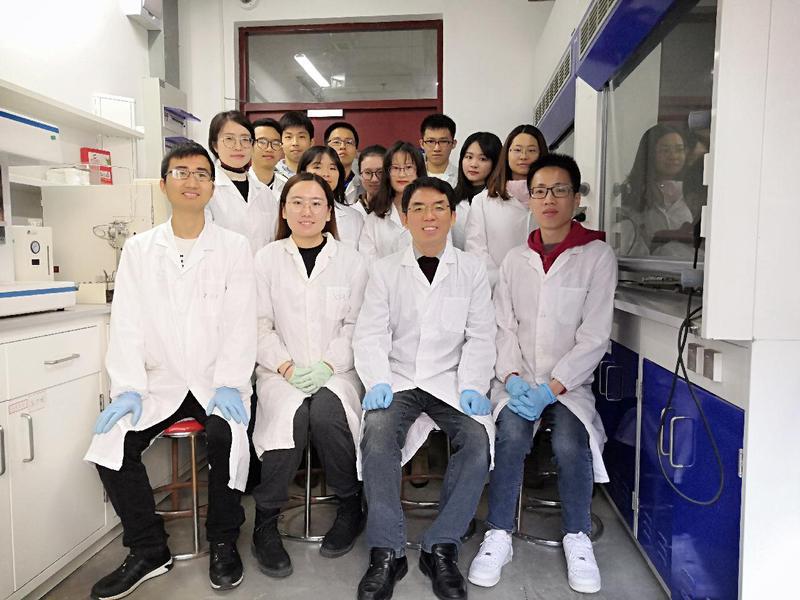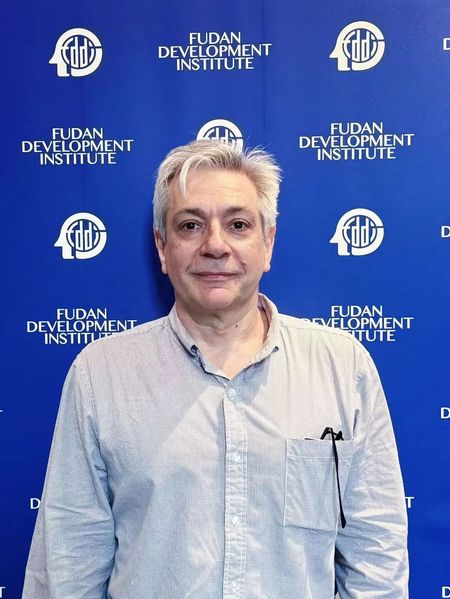Supramolecular assembly is ubiquitous in nature and living systems. Scientists have synthesized a large number of self-assembled nanomaterials with novel structures and unique properties by means of non-covalent bonding and supramolecular biomimetic assembly.
As an important class of nanostructured materials, semiconductor nanowires have received extensive attention in the field of nanoscience because of their unique electrical, optical, thermal and electrochemical properties, which have broad application prospects in new energy, intelligent nanosensors and so on. The flexible, controlled, large-scale fabrication of semiconductor nanowires and their assemblies through the “bottom-up” supramolecular assembly pathways is a common dream pursued by chemists and materials scientists alike.
Recently, the team led by Prof. Deng Yonghui at the Department of Chemistry and State Key Laboratory of Polymer Molecular Engineering of Fudan University designed and synthesized new semiconductor nanowires gas sensitive materials via the “bottom-up” supramolecular assembly. Relevant research results were published online in Nature Materials on December 2 under the title of “Synthesis of orthogonally assembled 3D cross-stacked metal oxide semiconducting nanowires”.
For the first time, the team was able to directly synthesize a three-dimensional porous array of metal oxide semiconductor nanowires with equal spacing and orthogonal arrangement by co-assembly of organic block copolymers and inorganic polyoxometalates molecules.
As we know, chemiresistor-based semiconductor gas sensor possesses high selectivity and sensitivity, which has high application value in industrial production, environmental monitoring, intelligent medicine, aerospace, national defense security, space exploration and other fields. At present, the rapid development of the Internet and the Internet of Things has greatly promoted the application of sensing technology in various fields. As the nerve endings of the Internet of Things, sensors are the core components of sensing technology, the windows for obtaining information and the basis for executing instructions. The core of chemiresistor-based semiconductor gas sensor is gas sensitive semiconductor materials, so designing high performance gas sensitive material is the key to developing advanced gas sensors.
In the gas sensing response process, the gas molecules experience selective catalytic oxidation at the interface of the sensitive materials, and the changes in the electrical properties (such as resistance) of the material itself indicate the physical and chemical properties and concentration of the gas molecules. Therefore, the design of crystalline semiconductor metal oxide materials with abundant pore structure, high specific surface area and good carrier transport skeleton is helpful to improve the gas-sensitive response performance. On the one hand, the large specific surface area and rich interface can provide more active sites, which is conducive to gas-solid interface gas-sensitive catalysis. On the other hand, highly interconnected channels are conducive to gas diffusion and mass transfer in sensitive materials, increasing the probability of gas and sensitive material interface reaction, which can greatly change the electrical characteristics of materials and improve the sensitivity and selectivity of semiconductor sensors.
Despite of the significant advantages of the nanowire-based structures, semiconductor nanowires need to be synthesized before a variety of assembly strategies are used to form assemblies and apply them, according to previous studies. The method of “bottom-up” supramolecular assembly synthesis to directly construct porous assemblies of metal oxide nanowire arrays is beneficial to the development of nanowire sensors, but it has always been a great challenge for scientists.

Fig. 1 Supramolecular assembly between amphiphilic block copolymers and tungstosilicic acid to form a multilayer crosslinked tungsten oxide nanowire array (MC-WO3-NWAs)

Fig.2 Gas sensing properties of multilayer crosslinked tungsten oxide nanowire arrays
In response to the above challenges, Deng’s team adopted the supramolecular assembly concept of “bottom-up”, using the synergy between organic amphiphilic block copolymers (such as PEO-b-PS) rich in sp2 hybrid carbon and inorganic polyoxometalates cluster molecules (such as silicotungstic acid).
By manipulating the interfacial electrostatic assembly of large organic molecules and small inorganic molecules at the molecular scale, the research team managed to induce micellization and micellar fusion of the two, and further used solvent evaporation to induce assembly of cylindrical composite micelles at the nano scale, thus creating a 3D composite nanowire array that was closely cross-stacked for the first time.
The team found in the calcination-induced organic-inorganic composites an atypical “structural transformation” behavior, namely with the decomposition of organic polymer, silicotungstic acid molecules migrate to the cylindrical micelle contact region, before transformed in situ into Si-doped tungsten oxide (WO3) nanowires, ultimately forming porous metal oxide semiconducting nanowire arrays with orthogonal 3D cross-stacked structures and uniform nanowire spacings.
Through in situ characterization technique, spectral analysis, synchrotron radiation analysis and density functional theory (DFT) calculations, it is shown that the doping of Si elements in the tungsten oxidecrystal lattice leads to local distortions of the normal octahedral structure of γ-WO3, so the tungsten oxide in nanowire arrays is metastable ε-WO3.
Further studies have indicated that the supramolecular assembly and synthesis ideas are also suitable for other polyoxometalates systems, such as silicomolybdate, phosphotungstic acid, phosphobdate and other single or multiple polyoxometalates, which can be used as inorganic precursor molecules and for synthesizing insitu-doped semiconductor metal oxides nanowire arrays. Taking Si doping ε-WO3 orthogonal arrays as an example, thanks to its 3D stacking porous structure, rich interface active oxygen (O-, O2-, etc.) and good electron transfer behavior, the metastable ε-WO3 nanowire array structure shows excellent acetone sensing response performance (acetone is one of the biomarker volatiles in human breath related to physiology and pathology).

This research achievement not only provides a new research idea for the creation of novel semiconductor nanowire arrays, the functionalization of nanowires (such as in-situ doping, etc.), and the in-situ integration of micro-nano devices, but also demonstrates an important foundation for the development of advanced energy devices, micro-nano sensing electronic components, and intelligent equipments.
Prof. Deng Yonghui is the only corresponding author, and his doctoral students Ren Yuan and Zou Yidong are the co-first author. Their work also benefited from the expertise of Prof. Shan Zhiwei from Xi’an Jiaotong University in the field of in situ electron microscopy.
Full text link: https://www.nature.com/articles/s41563-019-0542-x.





